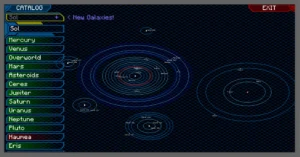What are the The Rings of Power Mod?
The Rings of Power Mod is a simple mod, that adds 20 rings of power to Minecraft. It is often mentioned as LOTR Mod’s addon, but it is independent mod and can be used without it. The mod adds 20 power rings, which are located in a separate creative tab. As soon as the ring is added to the inventory, the player gets the effect. Effect depends on the type of the ring. If player press RMB, any ring will give him different health effects.
This Rings of Power Mod is for v23.06.13.jar forge compatible with 1.20.1.
The documentation below will be useful to both developers and myself from the future. Information, guides, pitfalls, tips and all that. Be sure to read, there is unique information here that is not found anywhere else.
General information
Versions 1.3.2 – 1.6.4 use Voldeloom – an analogue of Forge, which allows you to develop on outdated versions. He uses other methods to do the same as the ancient Forge, but with the latest technology. As a result, these Gradle projects can simply be imported into Eclipse or opened through IntelliJ IDEA, so that Gradle itself starts the installation of the environment.
To run the mod from the environment, run the Gradle Task “runClient”, or open the Windows console in the environment folder and type “gradlew runClient”. After the first launch, pure Minecraft may start without your mod, this is the norm. Next time everything will be fine. You don’t need to do anything to compile the mod. Because runClient, which you will often run, compiles the mod itself. These are the features of Voldelooom. The finished mod is in the build/libs folder.
Version 1.7.10 is available in two flavors, ancient Forge and Voldeloom. The second option is no different from the paragraph above, but the first option (by default) has differences. The version is old, like ForgeGradle, so we can’t just import projects. Need crutch generation of the environment. There are two batch files in the folder, setupEclipse and setupIntellij. Choose the right one, wait for the end. After finishing the environment generation, we will import the generated IDE project. It is the IDE project! This is not a Gradle project. In the case of Eclipse, we will import the entire folder as an “existing Eclipse project”.
In the case of IntelliJ IDEA, we open the .ipr file. Then, after opening, it is highly recommended to convert the project to folder-based in the File -> Manage IDE Settings menu, otherwise bugs and freezes cannot be avoided. There are tricks with opening an Eclipse project file (.project) through IntelliJ IDEA, where you need to add a module. It will work, but why all this?
To start the game, we use two different approaches. In the case of IntelliJ IDEA, we have already generated two launch options from above, client and server. The server is down, this is normal. In the case of Eclipse, we must create a new run configuration. The entry file is GradleStart.
To build, use the Windows console in the environment folder, where you need to enter “gradlew build”. The finished mod is in the build/libs folder. Versions 1.8.9 – 1.11.2 are no different from the ancient Forge script in 1.7.10. Versions 1.12.2 – 1.20.1 are modern Forge, although the installation and environment is more like Voldeloom.















Luis - 09/22/2023 - Upvote (5) / Downvote
100feet